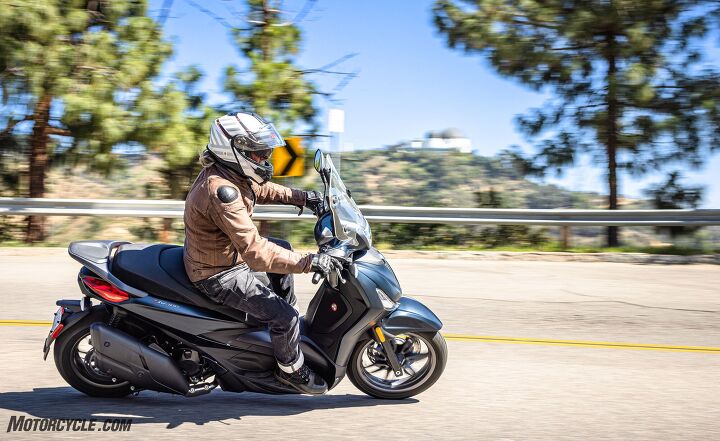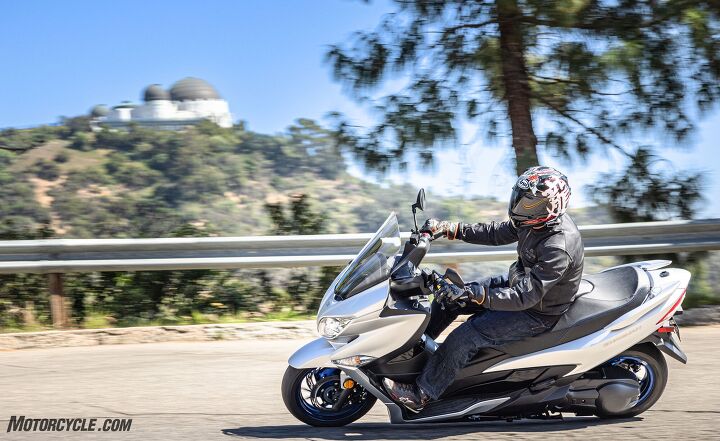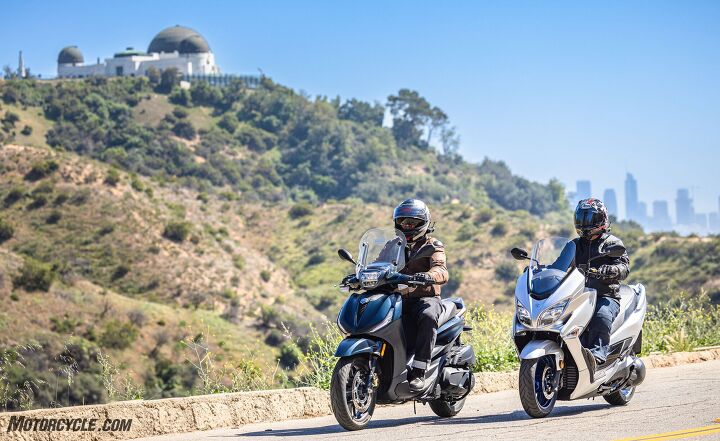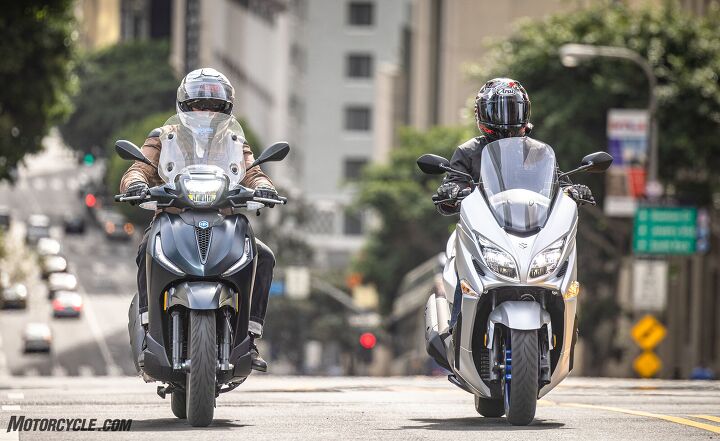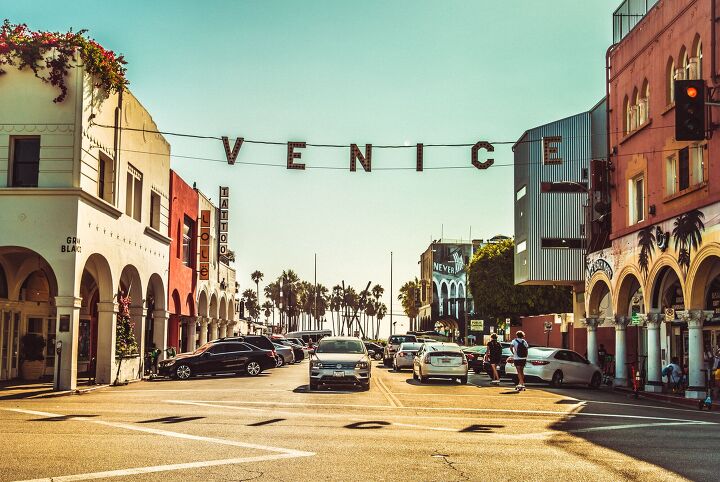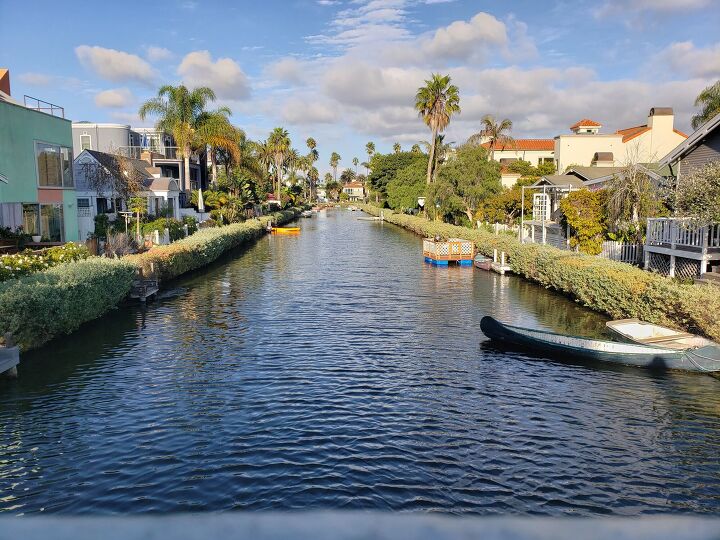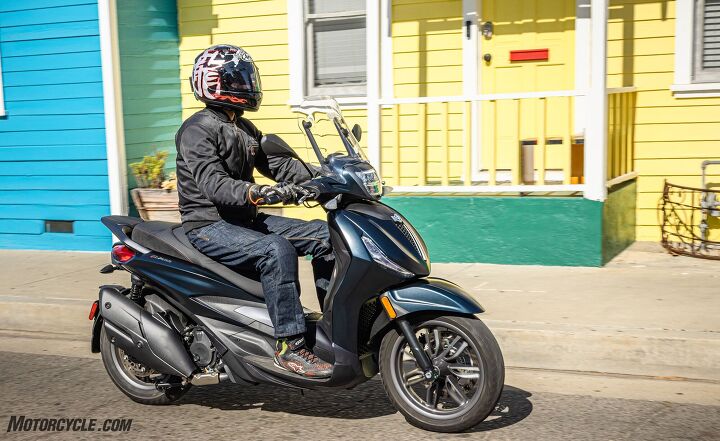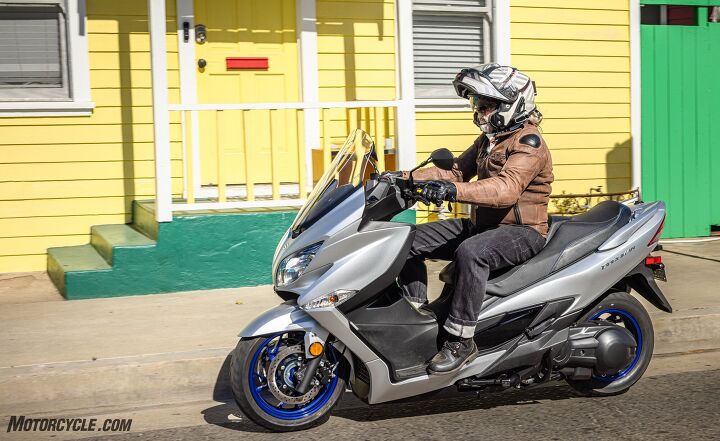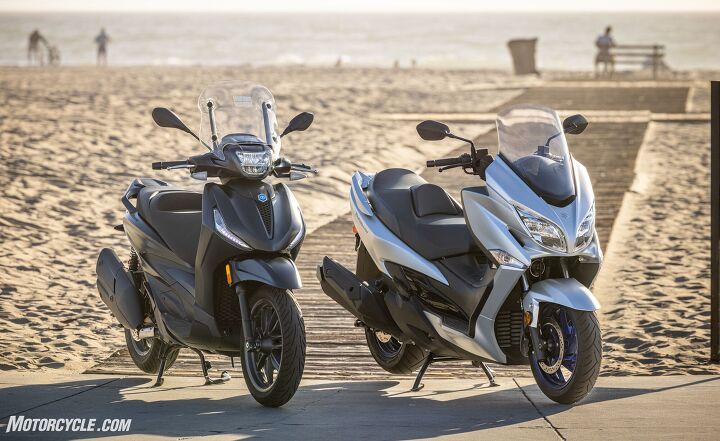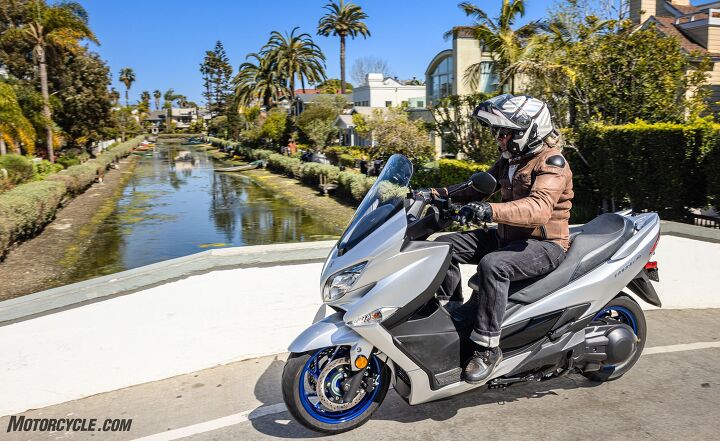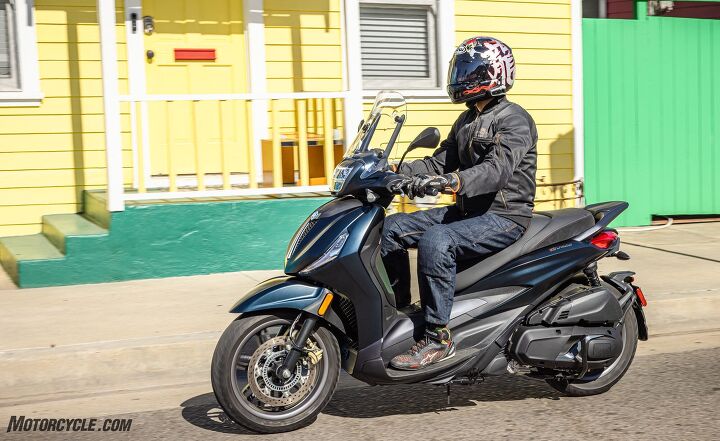Motorsports Racing News & Blog Articles
Showdown: 2022 Piaggio BV400 vs. Suzuki Burgman 400
Ah, Los Angeles. The city of angels and Dodger dogs, beaches and mountains. It’s the land where everyone is famous – or trying to be. People from all over call LA home, and the result is a really amazing place, steeped with rich traditions and cultures from all over the world.
But all most people think of when someone says Los Angeles is the snarling traffic and congestion. LA is a big place, and the car culture runs thick here. That means traffic, unfortunately, is just a way of life.
Piaggio BV 400 vs Suzuki Burgman 400| Piaggio BV 400 | |
|---|---|
| + Highs Punchy engine that’s deceptively quick Good looking, too Less expensive of the two | – Sighs Seating position can get tiring after a while The whole scooter noticeably vibrates when the cooling fan kicks in Not as much storage as the Suzuki |
| Suzuki Burgman 400 | |
|---|---|
| + Highs Ultra-comfortable Lots of storage space Slightly better suspension of the two | – Sighs The engine isn’t as eager as the Piaggio’s Your head’s prone to buffeting with the windscreen farther away It’s more expensive |
Or is it? There’s a lot to see and do in LA, and one of the best ways to do it is on a scooter. Scooters like the new Piaggio BV 400 and Suzuki Burgman 400. Both scoots occupy that middle ground in scooterdom above the teeny scoots you might see bopping around metropolitan European cities, but also aren’t as gargantuan as the 650cc-plus scoots that could classify as the full-touring dressers of the scooter world. These, we think, strike that Goldilocks area of power, size, and storage capacity to make them perfect for getting around LA without all the stress.
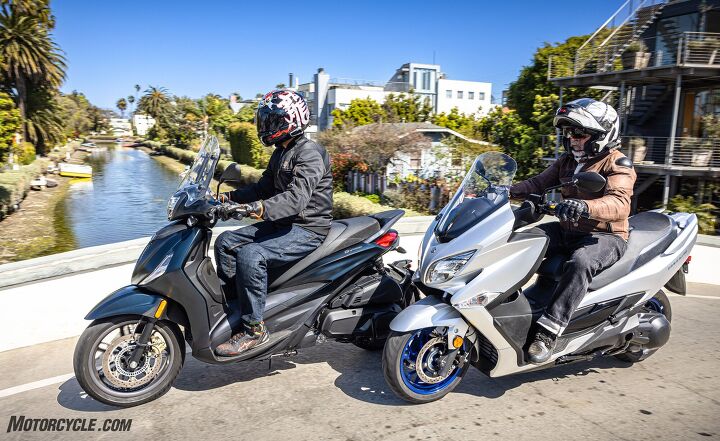
The Piaggio BV 400 (left) and Suzuki Burgman 400. Two underappreciated modes of urban transportation.
In fact, getting around LA on these scoots is exactly what we’re going to do. The plan is for Johnny Burns and I to scoot to some iconic, and some not-so-iconic, Los Angeles landmarks – most of which would be absolutely maddening to get to by car. Along the way, you’ll get to know more about the Burgman and BV 400, plus you’ll get to learn about some cool LA spots, too. We’re calling it the Tour of Los Angeles, scooter style. First up, the famous Hollywood sign.
Hollywood
Today, the Hollywood sign is one of the most iconic images of Los Angeles. Symbolizing fame, ritz, and glamor, the famous sign – the largest in the world – has a storied history. Constructed in 1923 at a cost of $21,000 (nearly $350,000 in 2022 money), the original “HOLLYWOODLAND” sign ushered in the burgeoning film industry as several studios, actors, and actresses made their way to Los Angeles in search of fame and fortune.
The sign has had quite a storied history since then, going through several states of disrepair and rebuilding. In 1949, the LAND in HOLLYWOODLAND was removed as part of a deal to repair the sign, resulting in the sign we know today. There’s much more to the sign’s story, but it’s all a huge sidebar to the topic at hand – scooters. You can read more about the history of the sign here.
Today, getting to the Hollywood sign on four wheels isn’t any fun. Since the sign is located on a hillside, narrow, twisty roads are what lead you to it. Factor in all the tourists trying to get a selfie, and its physical location away from any freeways, and actually getting close to the sign is a pain.
Unless you’re on a scooter, of course. Both the Burgman and BV slither up the narrow roads without a problem, and dodging the throngs of tourists like a game of Frogger is a breeze on these scooters. The ever-present parking problem is a real concern for the cagers, but the Piaggio and Suzuki are slender enough to slip in between cars. Easy-peezy. It makes enjoying the famous landmark much more palatable. After admiring the sign, a 180-degree turn reveals the Hollywood reservoir, and on a clear day, a view of some nice, ritzy homes.
When you’re done with Hollywood, the tour continues on to the Griffith Observatory, just a hop, skip and jump away.
Griffith Observatory
Los Angeles is known as the land of stars, but at the Griffith Observatory you can see actual stars up in the sky. First opened in 1935, the Griffith Observatory was the last request of Griffith J. Griffith, the benefactor of both the observatory and the park the land sits on which also bears his name. In his will, Griffith requested that admission to the observatory be free, and since its completion in 1935, it’s estimated that over 7 million people have looked up at the cosmos through the 12-inch Zeiss refractor telescope – making it the most viewed telescope on Earth.
Movie buffs might recognize the Observatory in its starring role in the movie “Rebel Without a Cause,” alongside young heart throb James Dean. The grounds have been featured in other movies since then, but the movie that helped launch Dean’s career is still the one the Observatory is best known for.
The grounds of the observatory, and the greater Griffith Park beneath it, also make for an exceptional place to enjoy a nature hike, have a picnic, or yes, get another view of the Hollywood sign. Still, navigating through the Griffith complex is tricky for much of the same reasons getting around the Hollywood sign is. Also, since the observatory is on a hill, the roads leading to it have some twists and turns. Not ones worth charging on your average sportbike, but when taken on some scoots, suddenly our inner Rossi comes out.
Both scoots actually flick over rather quickly due to their wheel sizes (16-inch front, 14-inch rear for the BV, 15-inch and 13-inch for the ‘Burg), but the Piaggio “is a tad sportier than the Suzuki thanks to its higher CG and feels like less weight – but it’s also taller and more nervous at top speed,” says JB. It tips in quickly and feels sportbike-ish because you’re sitting high and close to the bars. The Suzuki can carry some decent lean before hitting hard parts, and it’s even more comical that you can do it while keeping your feet out in front of you, cruiser style. The Burgman also sports some “modern” suspension tech by virtue of having a single shock with a linkage (it’s hidden under the bike). The Piaggio goes old school with twin, preload-adjustable shocks that John notes are a little choppy over bumps. If we’re splitting hairs, the ride is a little harsher on the BV 400, but you’re only going to know if you ride them back-to-back. And even then….
After winding your way up and down the hill to tour the Observatory, there’s still one more spot on the outskirts of Griffith Park worth visiting.
The Old LA Zoo

The remains of the large animal enclosures at the old LA Zoo. Photo by VaheSargsyan/Shutterstock.com
Unlike the Hollywood sign and Griffith Observatory, the Old LA Zoo is less a tourist attraction and more a locals spot where people picnic, hike, or generally just enjoy a nice SoCal day (though I’ve also been there in broad daylight when troubled teens thought others would like to see their graffiti “art”).
The history of the Old Zoo goes back to 1912 when it had just 15 animals. The zoo was expanded in the 1930s to include larger enclosures, but over the years as the city grew, the zoo was becoming too small for its own good. Conditions were becoming inhumane for the animals, and the zoo was struggling to keep up. It closed its doors in 1966, and the current LA Zoo opened just two miles away.

Today, the steps and entryway used by the old zookeepers are fenced off, but that hasn’t stopped taggers from doing their thing. Photo by wecreepitreal/Shutterstock.com
But instead of tearing down the enclosures, the Old Zoo is still largely intact, the land converted to park space with picnic benches for the people to enjoy. Today, you can walk the grounds surrounding the zoo and explore what’s left of the enclosures (including the doors and steps zookepers used to tend to the animals back in the day), or you can rest, relax, and imagine what the zoo would have been like all those years ago.
Getting to the parking lot of the Old Zoo is no less tricky than getting to the other spots above. If anything, it might be easier since you don’t have to deal with the winding roads that take you to the observatory. However, parking is at a premium once you arrive. Being able to squeeze into spots between cars shows off how convenient a scoot can be.
Once you arrive, you can throw a lot of your things in the under seat storage – the Burgman easily has enough space to swallow John’s size L modular helmet with room left over. JB’s lid almost fit under the Piaggio’s seat, but Burnsie couldn’t quite get the saddle to close. Piaggio claims there’s space for two half helmets and we believe it. As it were, we stuffed the Piaggio with several bags full of cameras and lenses for our video guy, Sean. Water bottles and extra layers of clothing were also stuffed to fill in any gaps.
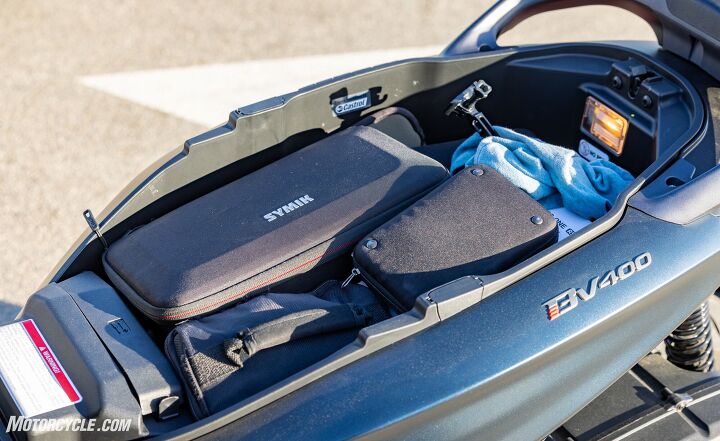
The BV’s under seat storage accommodates long objects better than tall ones. You can’t fit a full-face helmet, but there’s still sizeable storage underneath.
The Suzuki also has cubbies on either side of the bars to hold smaller items like a phone or water bottle. An old-school cigarette lighter-type 12v power source is waiting in the right cubby. “I like the two glove boxes up front,” says Burns. “It’s a shame the one that charges your phone doesn’t lock. And it’s a shame they’re both angled so that you can’t leave a drink handy. But they beat the Beverly’s no-glovebox at all. I suppose you’d have to buy one of those swivel drink holders for boats.”
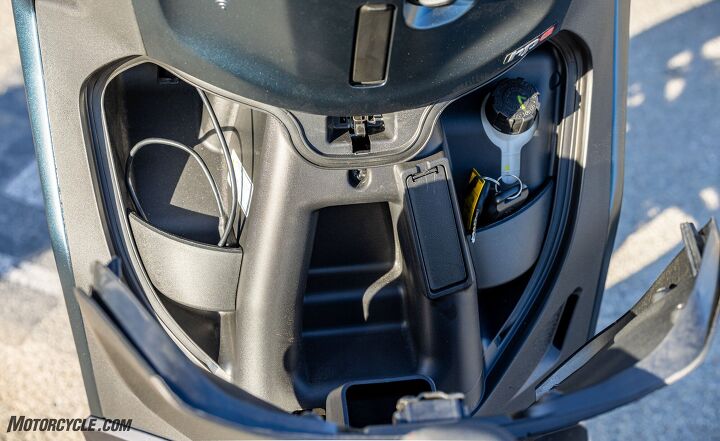
This hidden compartment in the Piaggio’s leg shield features a USB port on the left, but it’s just big enough to hold a phone. Coolant reservoir is seen on the right.
No, the Piaggio doesn’t have a glove box, per se, but it does have a hidden compartment resting low in the leg shield. There’s a little pocket with a USB port and just enough space for a phone. The point is both have enough space for a picnic in the park. Just leave the blanket at home.
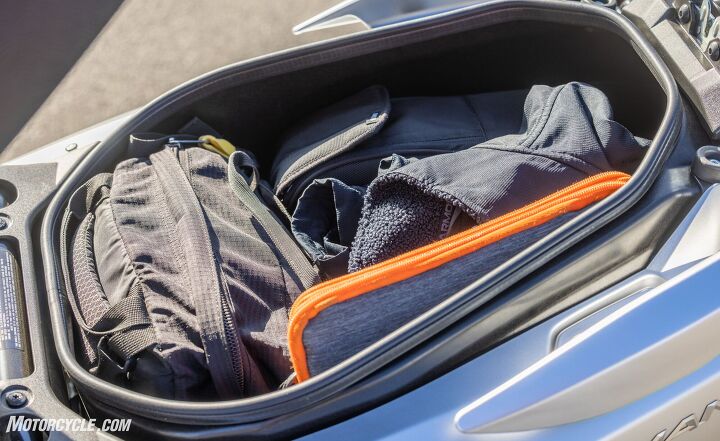
In contrast to the Piaggio, the Burgman’s under seat storage is taller than it is wide, easily accommodating John’s modular helmet. Or larger camera bags, as seen here.
Speaking of food, if you’d rather have someone else cook your lunch, then it’s time to take the scoots into the heart of Downtown Los Angeles.
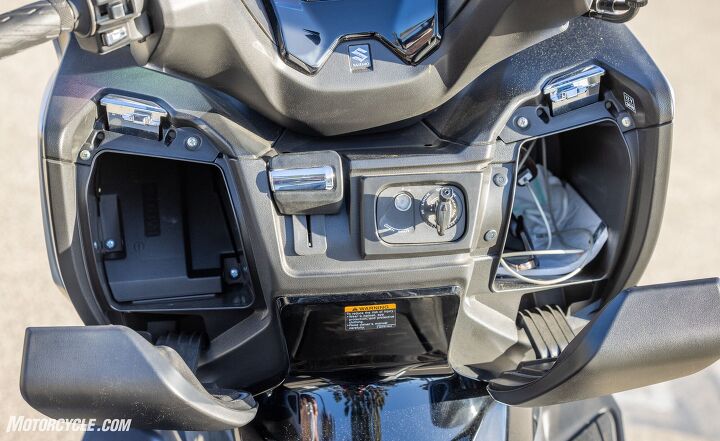
The Burgman wins points for having two glove boxes that you can actually store stuff in (you’ll see a 12v power port in the right box if you look closely). The center lever is a hand brake (something the Piaggio does not have), adjacent to a traditional key. The BV 400 uses a key fob.
Grand Central Market
The beauty of having so many different cultures in LA is having access to so many different types of food! LA is a food town, and the Grand Central Market has been bringing together the town’s diverse flavors since 1917. A semi-open-air market with 40 stalls to choose from, the Market is a microcosm of the immigrant communities that have shaped Los Angeles and call this city home. Whatever you’re hungry for, chances are you can find it at the Market. After a brief spell of being paralyzed by so many choices, John and I decided to go for pupusas.
It’s also in the heart of downtown LA, which is a nightmare to get to by car. On these scoots, navigating the one-way streets, congested lanes, and clogged parking lots is as easy as can be. Both the Suzuki and Piaggio squeeze between traffic easily, and both are equipped with ABS, just in case a distracted driver pulls a dumb move in front of you. The Piaggio also has surprisingly bright LEDs all around, so hopefully those drivers see you long before they ever make those dumb moves in the first place. In an odd twist, both scoots also have traction control. We’re not quite sure why, as neither are tire-shredding machines with their 30-odd horsepower. But better safe than sorry, right? (TC can be turned off in the Piaggio’s case.)
No tour of Los Angeles is complete without a trip to the beach, and after a good meal at the Market, it’s time to head west. It’s off to Venice we go.
Venice
There are no shortages to choose from of course, but we’re choosing Venice this time around. Home to Muscle Beach, intricate murals, and the quintessential California laid back lifestyle, Venice also has a thriving arts community. Not to mention its own set of canals like the Italian city it shares a name with. That’s not a coincidence, either, as local developer Abbot Kinney built several miles of canals here in 1905 as part of his Venice of America project. But by the 1920s the growing popularity of cars meant more roads needed to be built and nearly all of the canals were filled in and paved over – except for the four that remain today.
Getting from downtown to the west side means a trip on the freeway, and it also highlights the two main differences between the Burgman and the BV 400 – the ergonomics and the power. Both can handle freeway duty just fine, but the Piaggio’s punch leaves you feeling confident that you can hang with the traffic around you. There’s plenty of oomph to get you up to speed and enough in reserve to make a pass if needed.
The Piaggio’s upright seating gives a commanding view of the road, while the position of the bars and windscreen being so close means your head isn’t getting buffeted around much, either. “Super quiet at freeway speeds, mostly because the upright ergoes puts your head only about 8 inches from the top edge of the windscreen,” says John. On the downside, the seat foam is kinda hard and your feet are stuck right underneath you with nowhere to go. So you’re planted in the same position whether you like it or not. John also noted the Piaggio felt a little more nervous at high speeds despite its bigger 16-inch front wheel and 14-inch rear, compared to the Burgman’s 15-inch/13-inch combo. I can’t say I felt the same. While we’re splitting hairs, the Piaggio’s square-edged and non-adjustable brake levers were a little too far away for our tastes. You might feel differently if you have big hands.
When it comes to comfort, the Burgman 400 wins out. Especially on the highway. You can kick your feet out in front of you or place them down in front like a traditional scooter. The seat’s nice and soft – but not too soft – for a comfy ride down the road. “I like the long, lowness of the thing,” says John. “Being able to touch feet easily on both sides just makes it more relaxing to cruise around on, and strangely even though we don’t like feet forward on most cruisers, on the Burgman it somehow works. You can also pull your feet pretty far rearward onto the floorboards too. But the windshield is blusterier than the Beverly’s at speed because you’re further from it.”
So, there’s a tradeoff in comfort between the two. Do you want to sit long and low but get hit by the wind, or sit up and have the wind cruise right over the top of you? And there’s another tradeoff, too: power. The Suzuki will cruise at highway speeds, but there’s a noticeable lack of urgency compared to the Piaggio, and once you’re rolling along with traffic, there’s really not much left for overtaking. But, damn, are you comfortable.
Now Go Exploring!
Clearly, there are plenty more spots to hit in LA, but if you’ve been putting it off, now you know the best way to get around. Considering the cost of gas these days, we saved the best part for last: We were able to get a best of 52 mpg from the Piaggio and 51.5 mpg from the Suzuki. With mileage like that, it’s still cheap enough to fill up both tanks and explore the myriad of hot spots in this town we couldn’t get to.
As to which we’d pick? John can speak for the both of us:
They’re both so convenient I’d love to keep either one around the house. If you have a shady spot to park and a cheap cover, you’re all set to save room in the garage for more important things. Being covered in plastic, they’re as easy to hose off and keep clean as a small beater car, and who knows about the Piaggio, but you know the Suzuki will serve you forever like a faithful dog. They’re 90% as easy to ride as a small scooter to the Ace Hardware for a widget, but 100% better when you find yourself having to shlep across the megalopolis on the freeway; both are superb lane-splitters.
Still don’t care for LA? That’s fine. The point is still the same: No matter where you live, scooters make great exploration vehicles, and the Suzuki Burgman 400 and Piaggio BV 400 are excellent tour guides.
|
In Gear JB
|
|
In Gear Trizzle Helmet: Arai Defiant-X Dragon |
| Specifications | 2022 Piaggio BV 400 | 2022 Suzuki Burgman 400 |
|---|---|---|
| MSRP | $7,199 | $8,499 |
| Engine Type | 4-stroke, 4 valves, Single overhead camshaft (SOHC) | 4-stroke, liquid-cooled, single cylinder, DOHC |
| Displacement | 399 cc | 400 cc |
| Bore x Stroke | 84mm x 72mm | 81.0mm x 77.6mm |
| Max Power (claimed) | 35 HP at 7,500 rpm | NA |
| Max Torque (claimed) | 37.7 Nm at 5,500 rpm | NA |
| Starter | Electric starter | Electric starter |
| Fuel System | Electronic fuel injection | Electronic fuel injection |
| Fuel Capacity | 3.17 gallons | 3.6 gallons |
| Tested Fuel Economy | 52 mpg | 51.5 mpg |
| Transmission Type | CVT | CVT |
| Final Drive | V-Belt | V-Belt |
| Frame | Double cradle tubular pipe in high strength steel | Steel double cradle |
| Front Suspension | Hydraulic telescopic fork | Telescopic, coil spring, oil damped |
| Rear Suspension | Dual, double action hydraulic shock absorber, adjustable preload on 5 positions | Link type, single shock, coil spring, oil damped |
| Front Brake | Single 300mm disc, ABS, ASR | Disc brake, twin 260 mm |
| Rear Brake | Single 240mm disc, ABS, ASR | Disc brake, single 210 mm |
| ABS | Standard | Standard |
| Front Wheel | Cast aluminum | Cast aluminum |
| Rear Wheel | Cast aluminum | Cast aluminum |
| Front Tire | 120/70-16 | 120/70-15 |
| Rear Tire | 150/70-14 | 150/70-13 |
| Instruments | LCD | LCD |
| Length | 84.8 inches | 88.0 inches |
| Width | 31.5 inches | 30.1 inches |
| Height | NA | 53.1 inches |
| Wheelbase | 61.0 inches | 62.2 inches |
| Seat Height | 31.1 inches | 29.7 inches |
| Curb Weight | 430 pounds (measured) | 481 pounds (measured) |
| Colors | Argento Cometa, Nero Tempesta, Arancio Sunset | Metallic Matte Sword Silver |
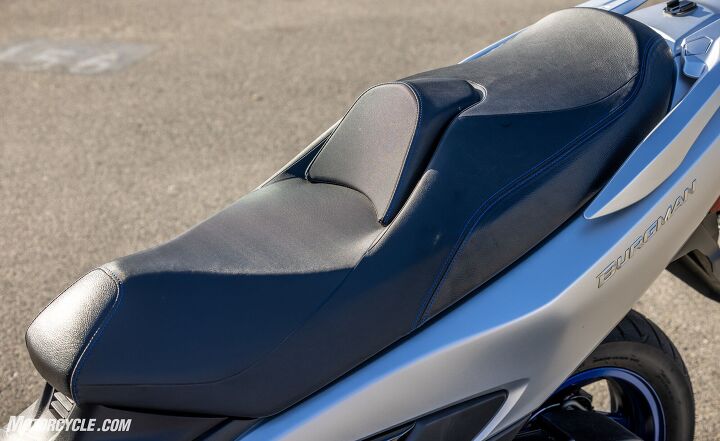
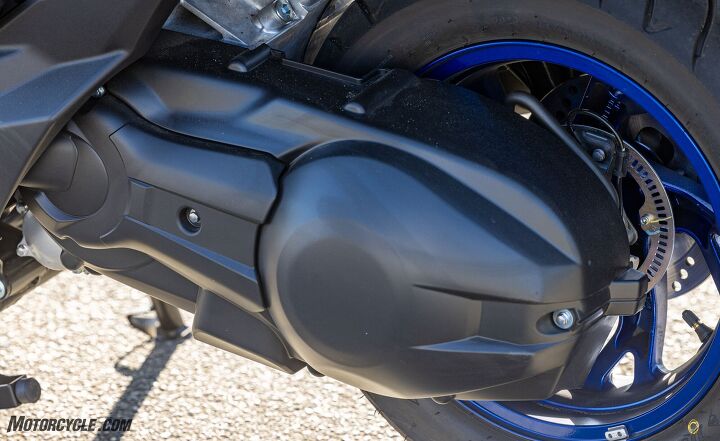
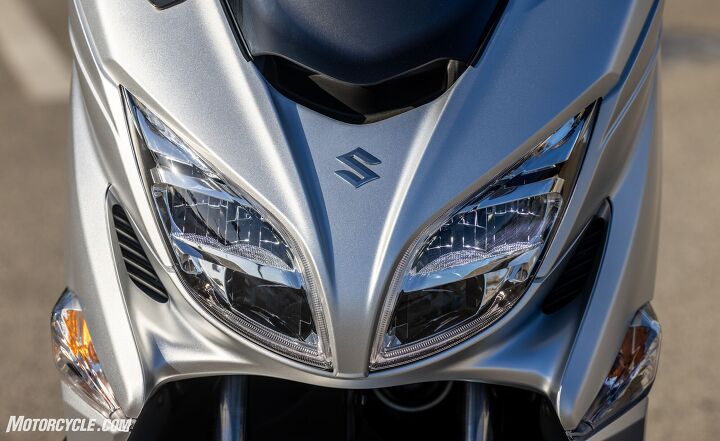
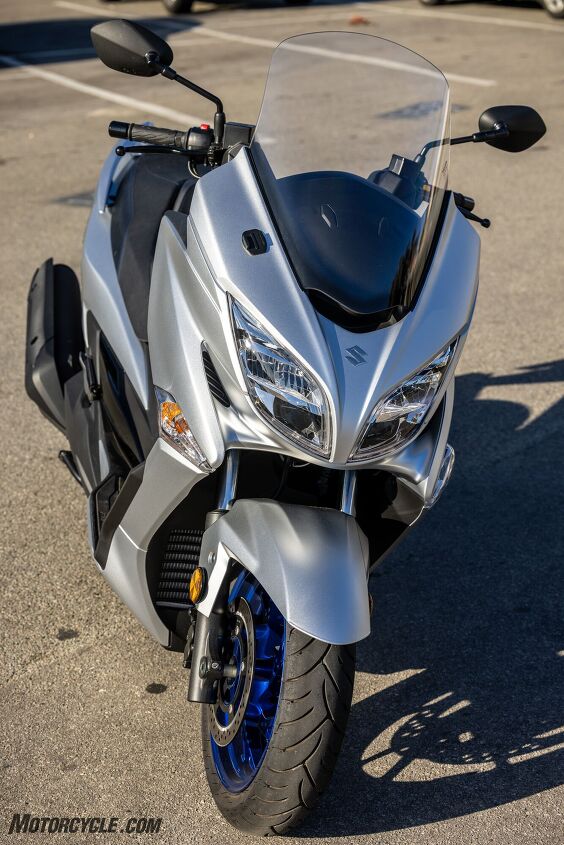
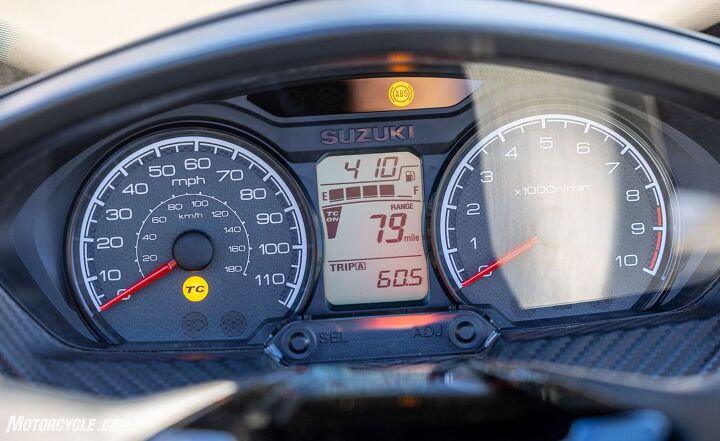
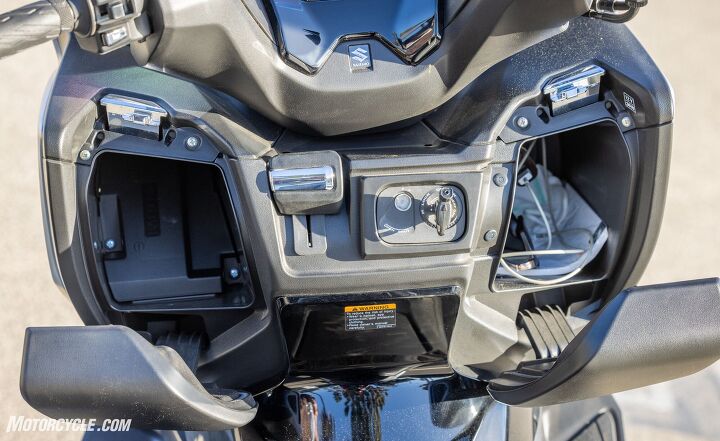
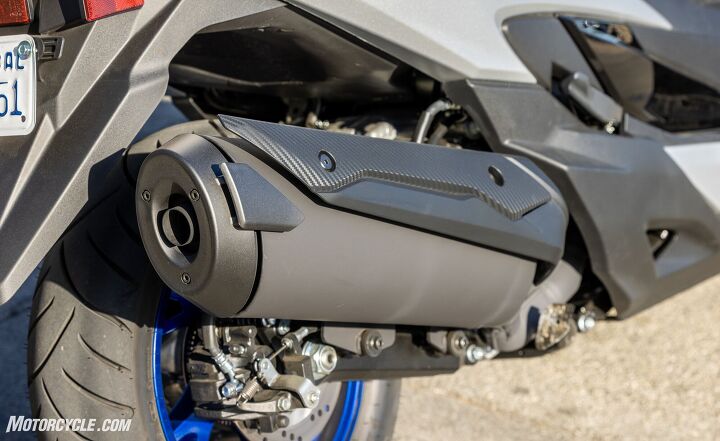
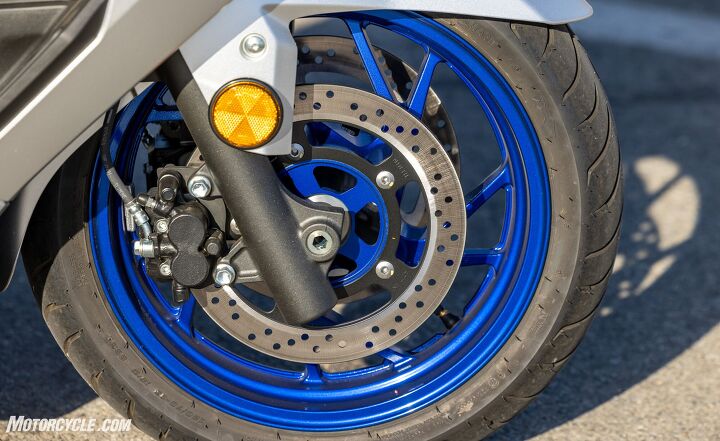
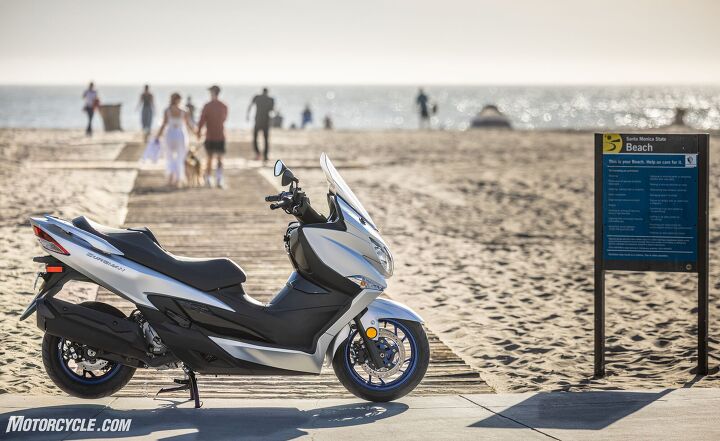
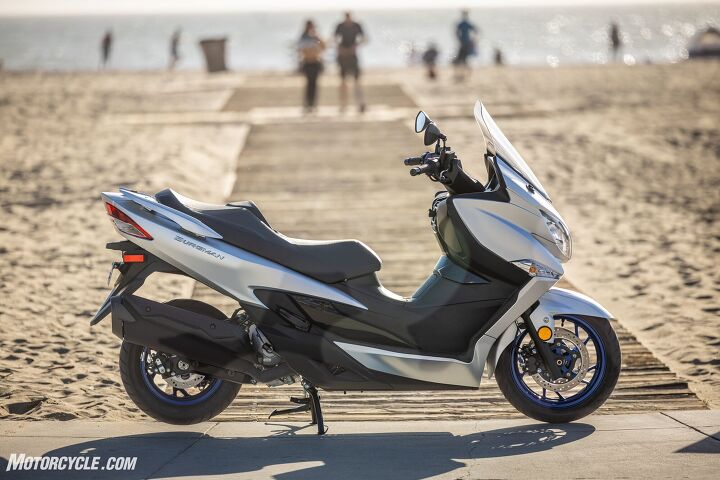
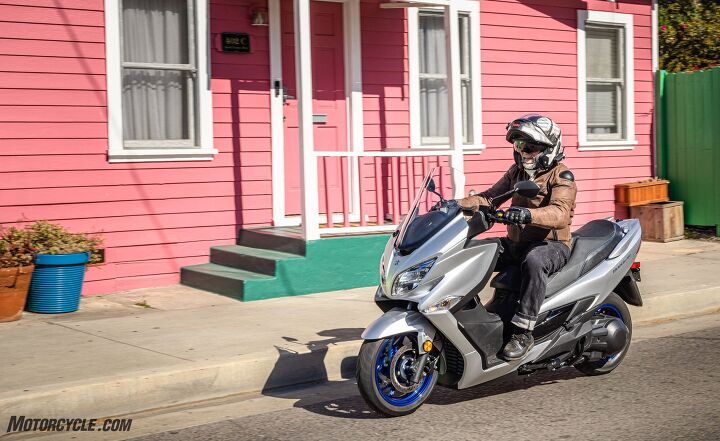

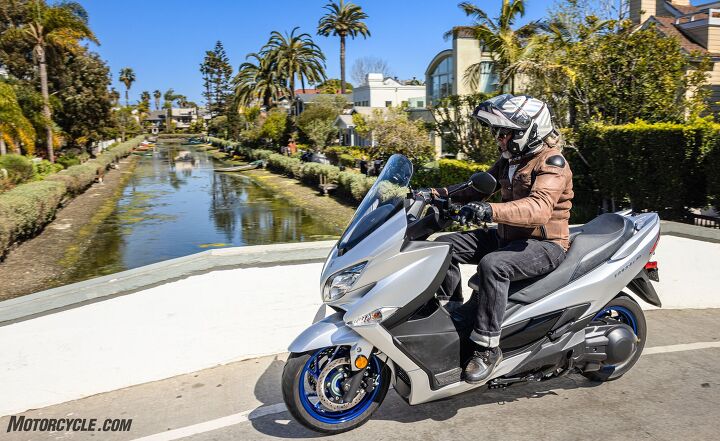
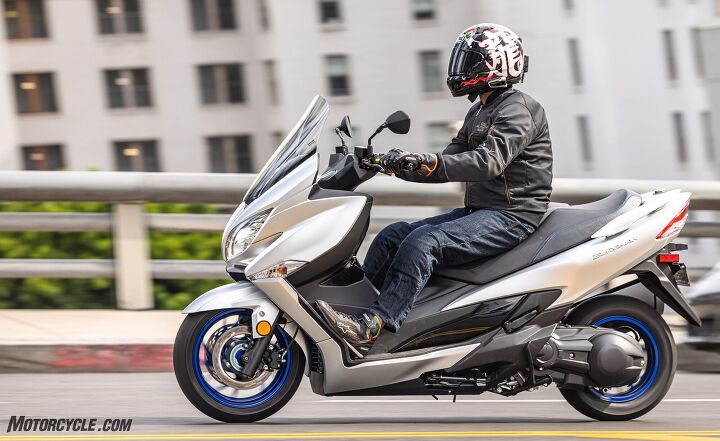
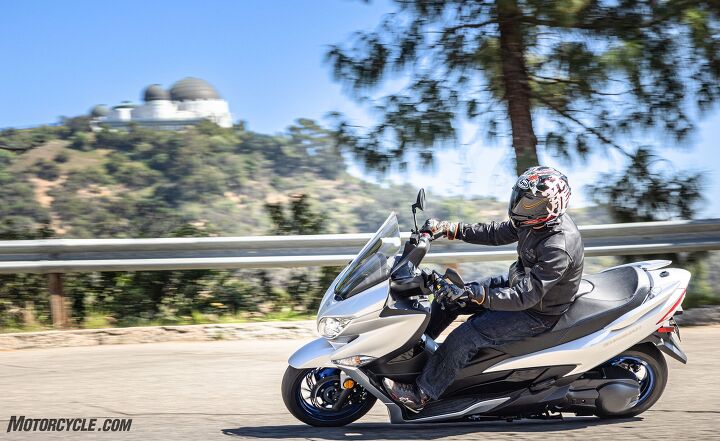
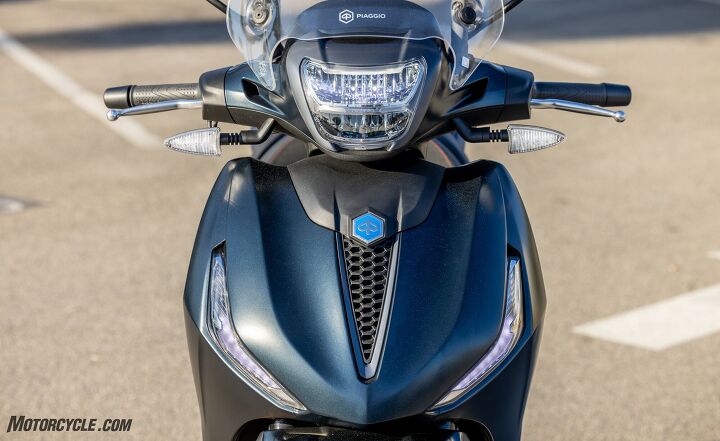
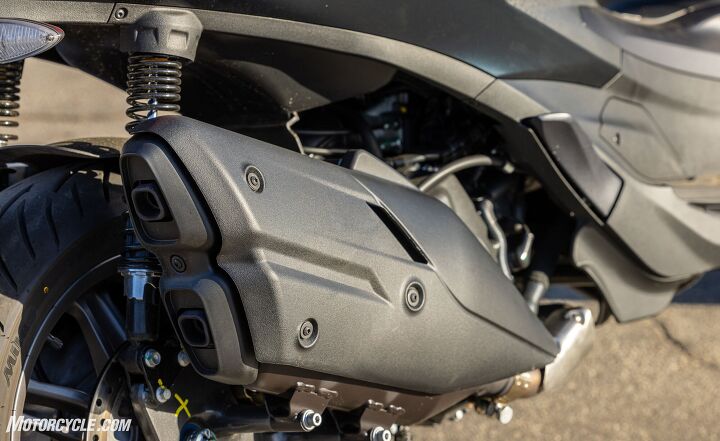
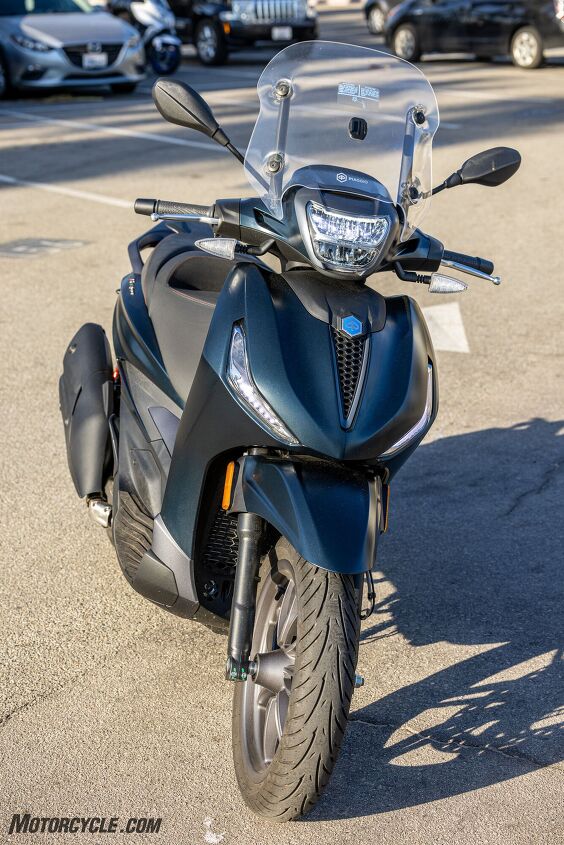

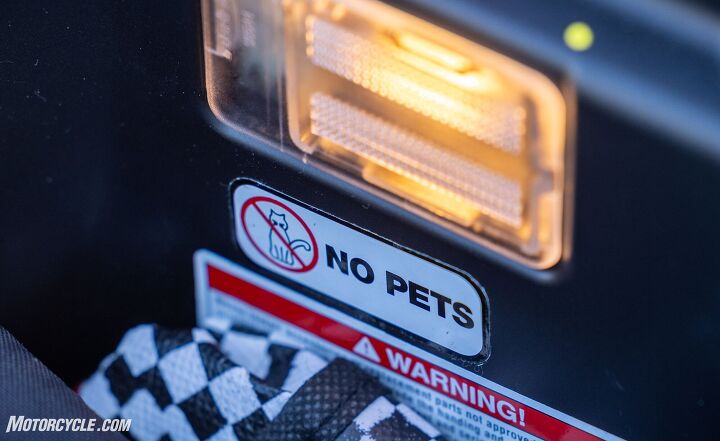
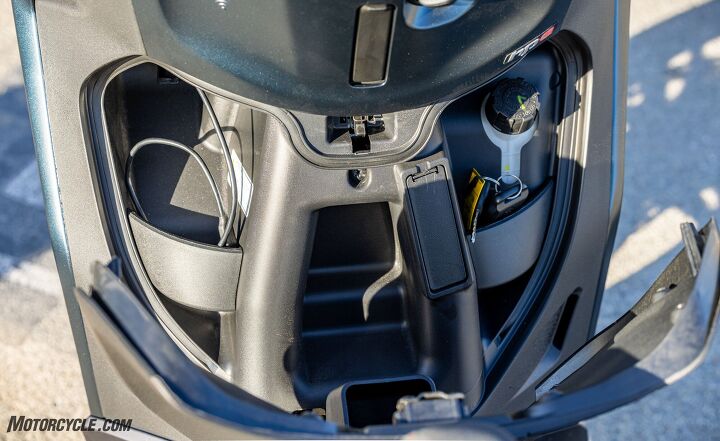
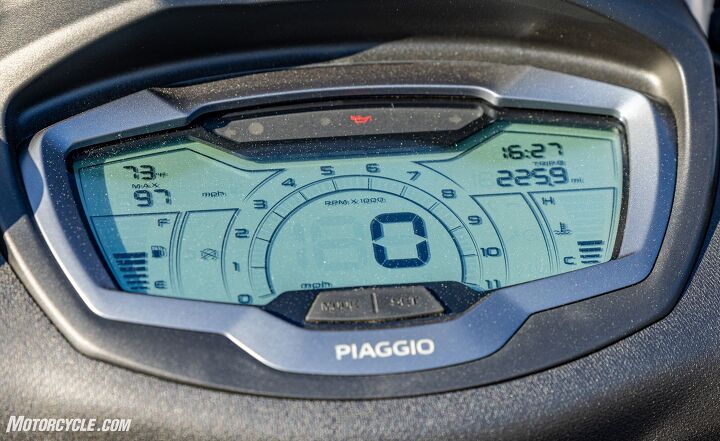
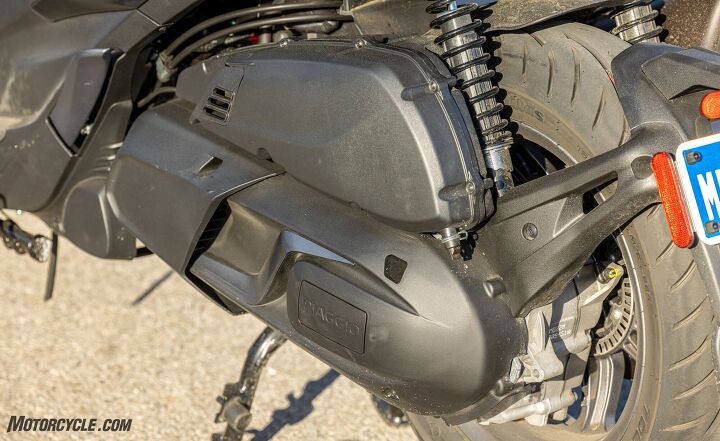
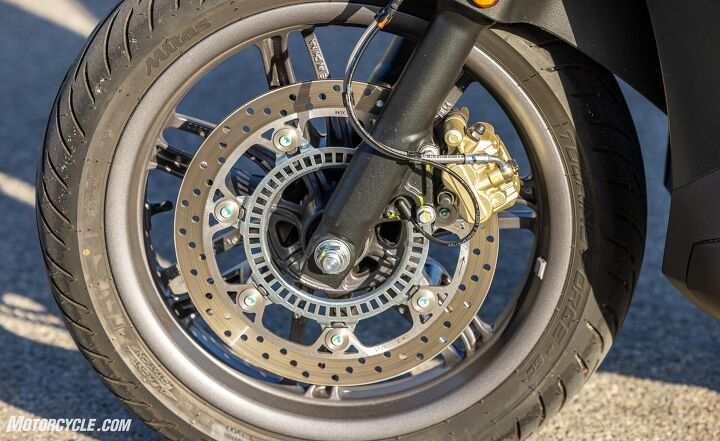
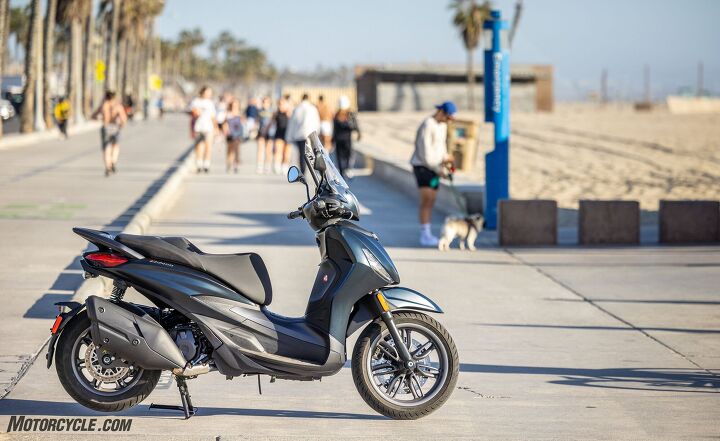
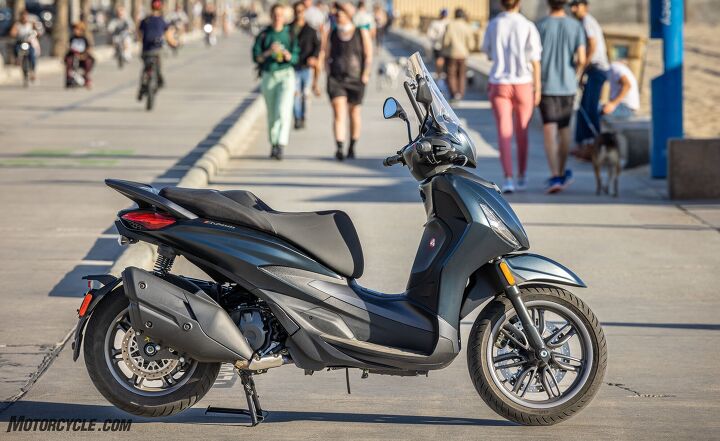
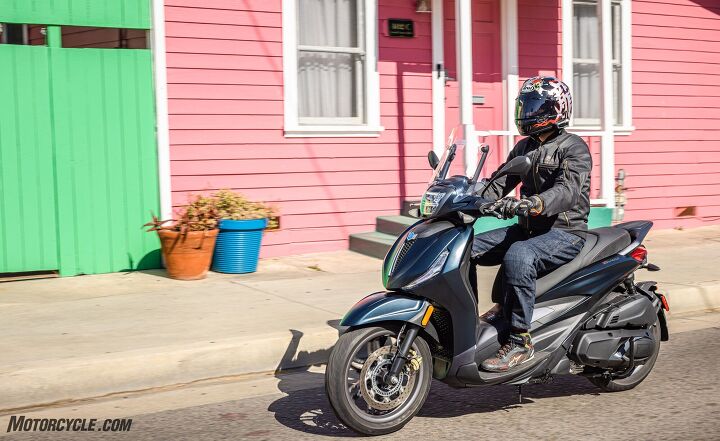
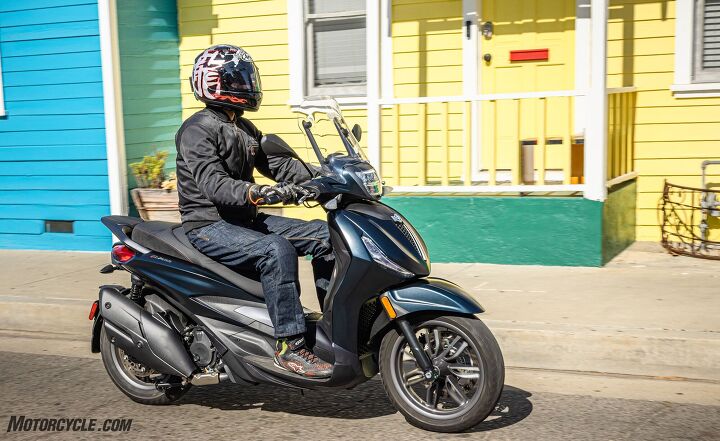
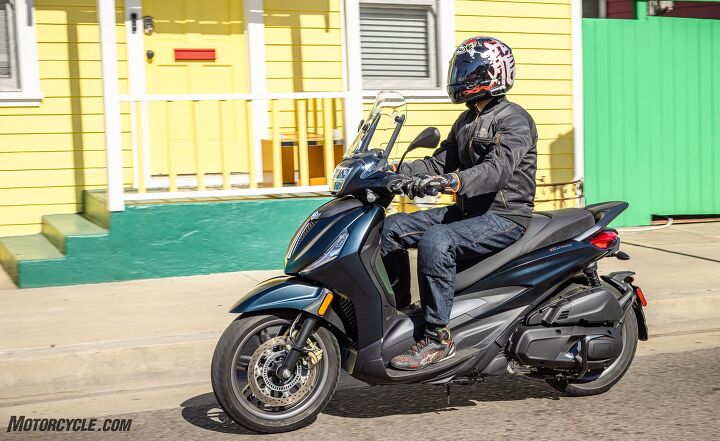
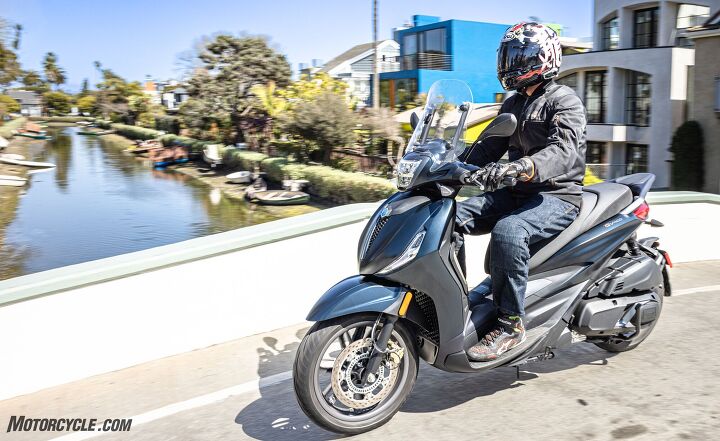
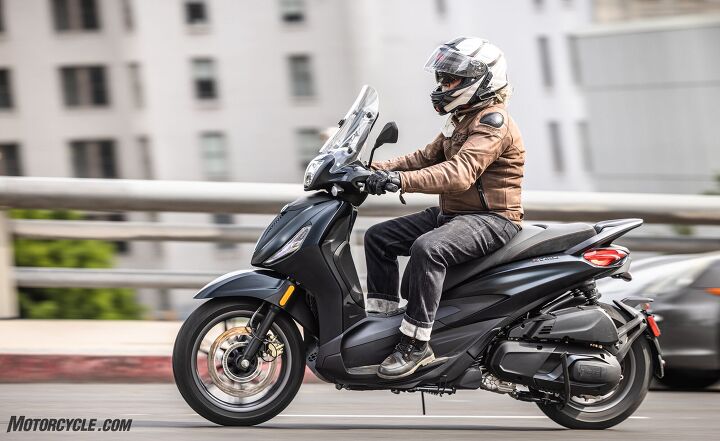
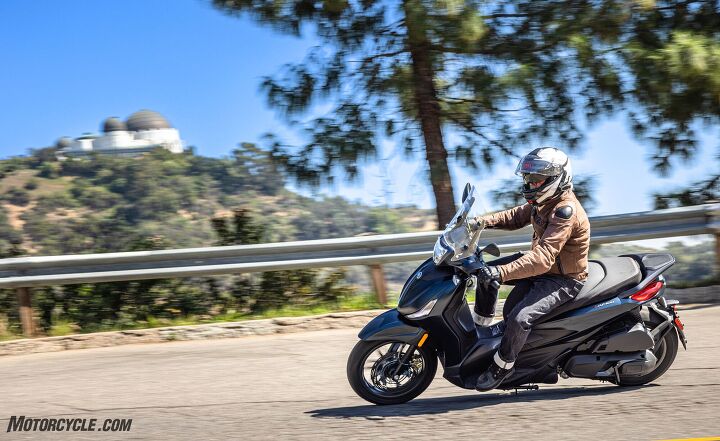
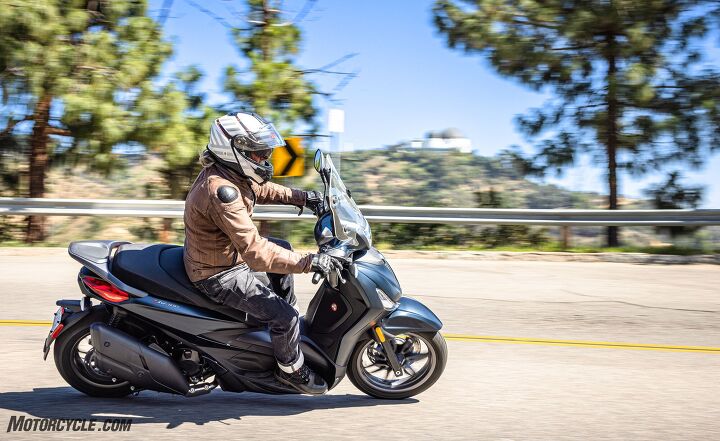
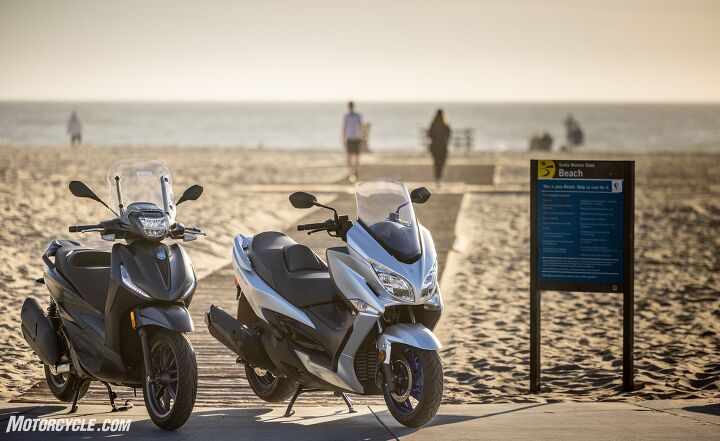
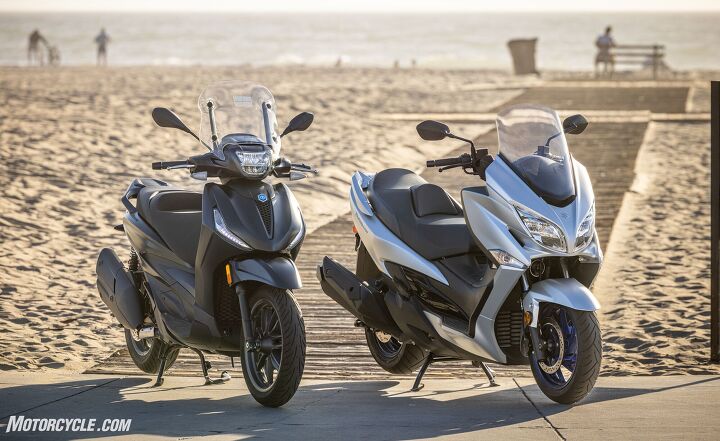
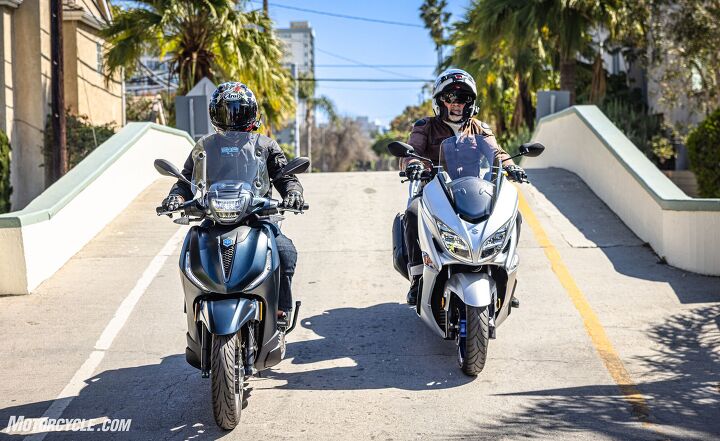
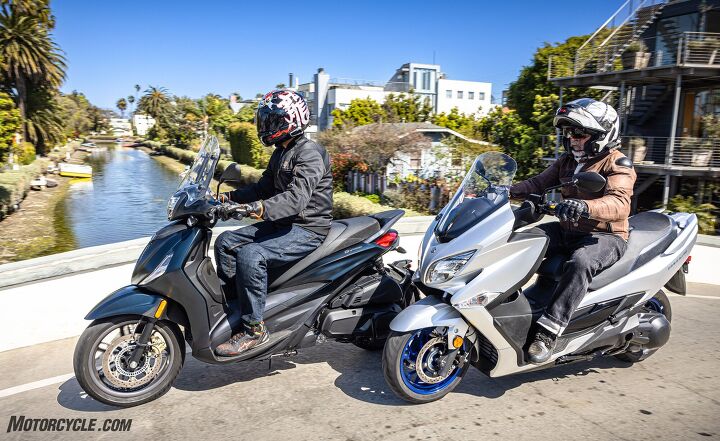
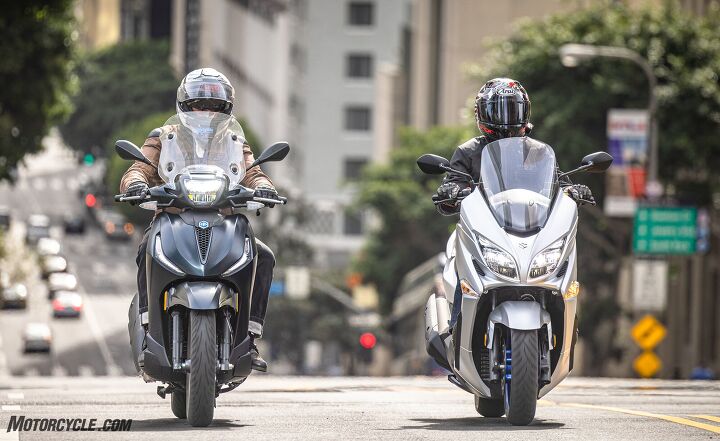
We are committed to finding, researching, and recommending the best products. We earn commissions from purchases you make using the retail links in our product reviews. Learn more about how this works.
Become a Motorcycle.com insider. Get the latest motorcycle news first by subscribing to our newsletter here.
The post Showdown: 2022 Piaggio BV400 vs. Suzuki Burgman 400 appeared first on Motorcycle.com.
Copyright
© Motorcycle.com



